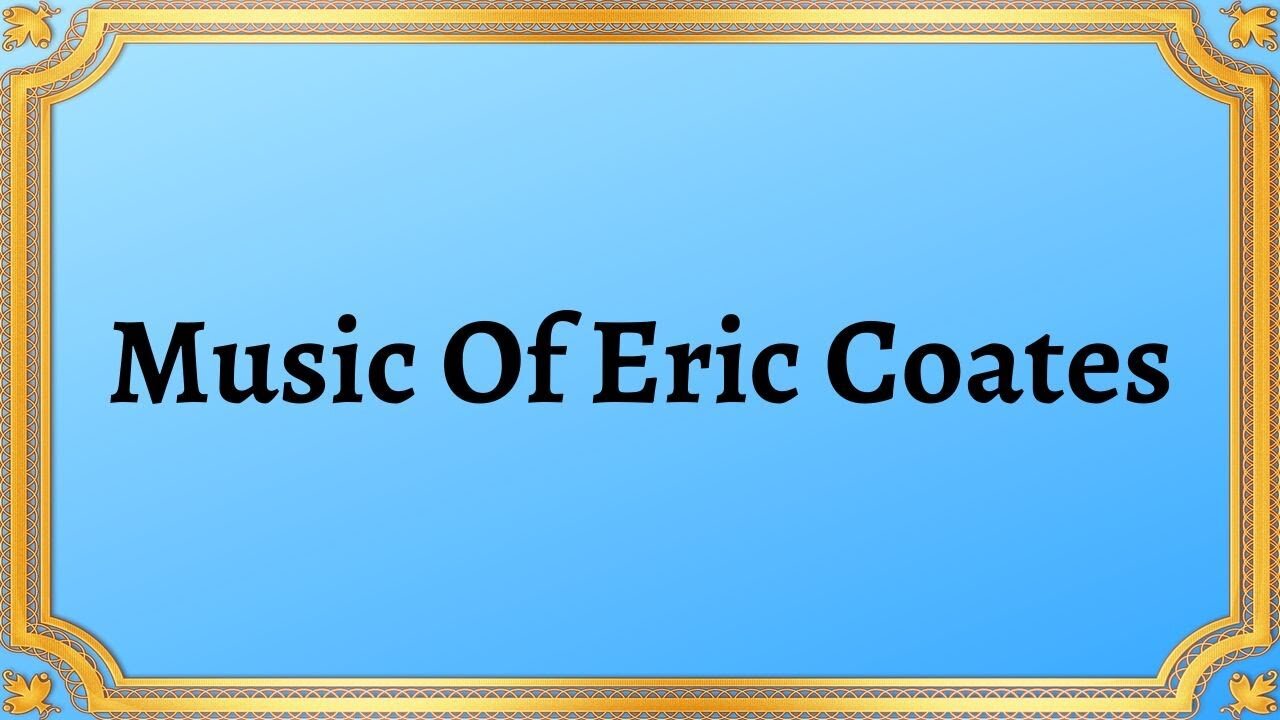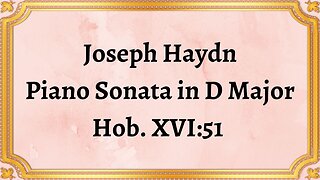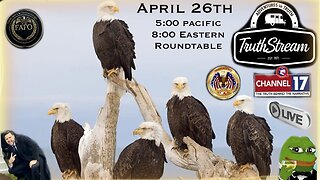Premium Only Content

Music Of Eric Coates
#EricCoates #classicalmusic #musiccomposition #KnightsbridgeMarch #CinderellaAFantasy #LondonCallingMarch #TelevisionMarch #DancingNightsValse #TheThreeBearsSuite #LondonBridgeMarch #FootlightsConcertWaltz #orchestralmusic #Britishcomposers #lightmusic #filmusic #televisionmusic #balletmusic #playfulmusic #whimsicalmusic #nostalgicmusic
Publication date 1950
ERIC COATES conducting the LONDON SYMPHONY
ORCHESTRA, the LONDON PHILHARMONIC ORCHESTRA
and the LIGHT SYMPHONY ORCHESTRA
1. Knightsbridge March
2. Cinderella (A Fantasy)
3. London Calling March
4. Television March
5. Dancing Nights Valse
6. The Three Bears - Suite
7. London Bridge March
8. Footlights (Concert Waltz)
Eric Coates was a master of light orchestral music, and his "Music Of Eric Coates" is a stunning collection of some of his most popular compositions. Combining brass, strings, and percussion in a delightful and memorable way, this piece evokes a sense of joy and nostalgia that is hard to resist.
The first composition in the collection is the "Knightsbridge March," which was originally written as part of the soundtrack for Leslie Howard's film "Sleepless Nights" and later incorporated into "London Suite" in 1933. Named after the Knightsbridge road in London, the piece is a joyful and triumphal march that is perfect for showcasing the brass section of an orchestra.
The second composition is "Cinderella (A Fantasy)," which was originally written as a ballet score for the pantomime "Cinderella." The composition is enchanting and whimsical, featuring delicate flutes and chirping piccolos that evoke an ethereal and magical atmosphere.
Next up is the "London Calling March," a piece that was composed specifically for the BBC WWII broadcasts in 1942. The composition features playful melodies and bombastic brass flourishes, reflecting the determination and stubbornness of the British people during their darkest hour.
The fourth composition is the "Television March," a piece that was originally composed as part of a series of bespoke theme tunes for British television programs in the 1950s. This piece is a bright and breezy march with catchy melodies and an infectiously optimistic energy that is hard not to get caught up in.
The fifth composition is the "Dancing Nights Valse," a piece that was originally written for the musical "Dancing Years." The music is mellow and romantic, featuring lush strings and graceful melodies that intertwine and spiral gracefully, creating an irresistible and intoxicating atmosphere.
The "Three Bears - Suite" is the sixth composition in the collection, which was based on the story of "Goldilocks and the Three Bears." The piece is playful and whimsical, featuring contrasting tempos and rhythms that create a sense of mischievous fun.
The seventh composition is the "London Bridge March," composed in 1934 as part of the "London Again" suite. The music is full of catchy melodies and lively rhythms that evoke the energy and vibrancy of London's iconic landmark.
Finally, the eighth composition is "Footlights (Concert Waltz)," which was written for the play "
You have the opportunity to support the channel https://destream.net/live/RadSiarAl/donate
-
 6:07
6:07
Classical music_Music Inspiration
3 months agoJoseph Haydn Piano Sonata in D Major, Hob. XVI:51
1311 -
 1:08:36
1:08:36
Man in America
15 hours agoUS, China, Israel & the Battle for the New World Order w/ Boone Cutler
81.4K65 -
 2:37:49
2:37:49
The Connect: With Johnny Mitchell
1 day ago $8.00 earnedBlackwater Mercenary EXPOSES Private Military War Secrets From The Middle East, Fueling Terrorism
38.7K40 -
 LIVE
LIVE
EXPBLESS
31 minutes agoA Rare Sunday Morning Stream (Avowed LIVE Gameplay)
312 watching -
 2:54:21
2:54:21
Total Horse Channel
2 days ago2025 Scottsdale Arabian Horse Show | Saturday Evening Session
80K6 -
 LIVE
LIVE
BigDaddySlick78's Live Gaming Channel
3 hours ago🔴 Call Of Duty Warzone Rebirth Island & Area 99 Live w/ Subs #callofduty #warzone #bo6 #cod
37 watching -
 22:39
22:39
The Mel K Show
11 hours agoMel K & Representative Brandon Gill | Our Constitutional Republic is Being Restored | 4-26-25
63.4K48 -
 4:17:17
4:17:17
VapinGamers
11 hours ago $6.28 earned📣 Fortnite Family Night! - Games and Dubs with BrianZGame - !rumbot
49.1K3 -
 4:27:48
4:27:48
ThePope_Live
9 hours agoLIVE - First time playing The Finals in over a YEAR! Still good? with @Arrowthorn
37.6K1 -
 3:06:26
3:06:26
TruthStream with Joe and Scott
15 hours agoRoundtable with Patriot Underground and News Treason Live 4/26 5pm pacific 8pm Eastern
61.5K38